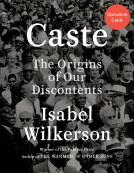
Stem Cells in Regenerative Medicine: Carpe Diem – Carpe Vitam!
by Mike K.S. Chan; Dmitry Klokol
This title was previously available on NetGalley and is now archived.
Send NetGalley books directly to your Kindle or Kindle app
1
To read on a Kindle or Kindle app, please add kindle@netgalley.com as an approved email address to receive files in your Amazon account. Click here for step-by-step instructions.
2
Also find your Kindle email address within your Amazon account, and enter it here.
Pub Date Aug 02 2019 | Archive Date Sep 06 2019
Troubador Publishing Ltd. | Matador
Talking about this book? Use #StemCellsInRegenerativeMedicineCarpeDiemCarpeVitam #NetGalley. More hashtag tips!
Description
In most of the doctors’ perception the term ‘regenerative medicine’ is associated with tissue reconstruction after severe injuries, burns or trauma. And that is absolutely correct except the fact that tissues and organs deteriorate and lose their function not only due to mechanical or physical damage, but as a result of chronic diseases, inflammation, age-related degeneration as well as genetic abnormalities and cellular dysfunction. The profound understanding of tissue morphology on the cellular level and studying of the ontogenesis open magnificent opportunities to restoration of structural and functional integrity of human organism.
Throughout centuries scientists and healthcare practitioners were in a constant pursuit of longevity—from Avicenna and Paracelsus to Brown-Sequad, Serge Voronoff and Paul Niehans. Not so long ago, in 1990’s, when the term regenerative medicine was tailored by Dr. Leland Kaiser and propagated by William Haseltine it was considered to be a medicine of the Future, «a new branch of medicine will develop that attempts to change the course of chronic disease and in many instances will regenerate tired and failing organ systems», as Dr. Leland Kaiser described it. A new hope spurred up that almost any condition can be at least improved if not cured by means of regenerative medicine, including those cases where conventional medicine is powerless or ineffective.
The Future Dr. Kaiser was talking about is certainly a Present today. Though relatively small amount of practitioners are aware of today’s regenerative medicine capabilities and many still consider it more like science fiction.
This book reveals concepts and protocols of successful approach to regenerative medicine by means of stem cell therapy. It also highlights important aspects of manufacturing and culturing of cell therapy products and administration of different types of stem cells in various systemic disorders.
Available Editions
| EDITION | Ebook |
| ISBN | 9781838599935 |
| PRICE | $98.00 (USD) |
| PAGES | 200 |




